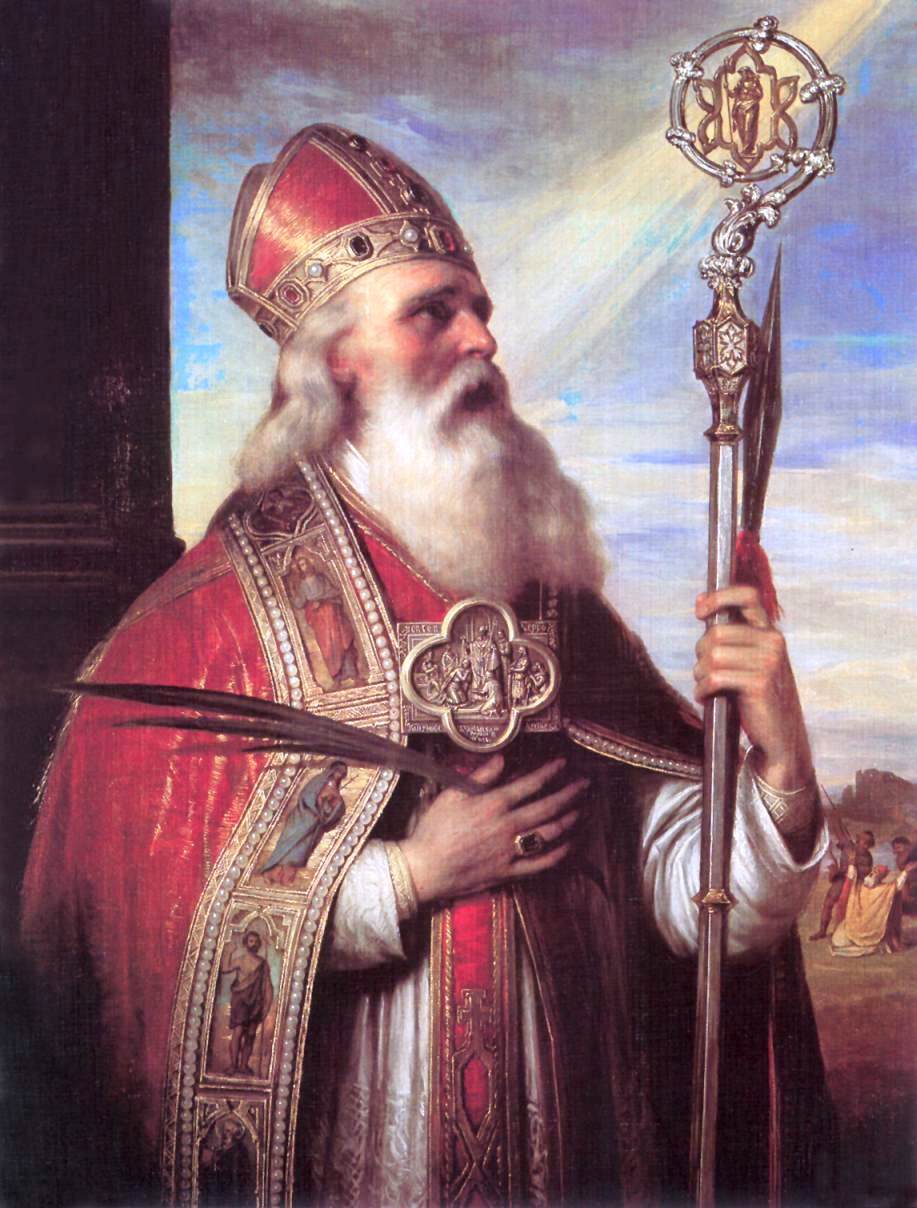Adalbert of Bohemia (c.950-997)
St. Adalbert of Bohemia was born in the tiny village of Libice, east of Prague, the son of a prince related to the royal house of Saxony. Educated at Magdeburg, he was ordained in 981 to the priesthood by Dietmar, first bishop of Prague. In 982 he succeeded Dietmar to the bishopric of Prague. Thereafter he was consecrated by the archbishop of Mainz, Willigis, and invested by Emperor Otho II.
Though his birth name was Wojtech, he chose instead to adopt the name of Adalbert upon becoming Archbishop, that being the name of his teacher at Magdeburg, whom he admired greatly. Adalbert attempted unsuccessfully to uproot such heathen customs and practices as paganism and polygamy, attacking the use of dweomercraft, these things being prevalent among his people. Discouraged, he decided to go on a pilgrimage to Jerusalem, but after reaching Monte Cassino he abandoned the plan, and in 990 entered the monastery of St. Boniface, where he led a life of seclusion, devoted to study.
In 992, the Pope requested that he return to Prague, where he was received with joy by his people, but he was soon compelled to leave again. He became a missionary to the heathens of Hungary, and it was he who probably baptised King Stephen, who was later to become the first saint of Hungary. When Adalbert returned to Italy, he again was asked by the Pope to return to Prague, with permission to go on missions to the heathens should he fail there. Adalbert found Bohemia in a state of civil war; members of his family were accused of treason, and some were even put to death. There was little he could do; therefore he went to Poland and from there undertook a mission to the heathen Prussians.
Adalbert was murdered by a pagan priest in Prussia in 997. The Duke of Poland paid a heavy ransom to recover his body, which was buried at Gnesen. Later it was said that the body was transferred to Prague. He became the object of popular worship at both Gnesen and Prague, and soon thereafter was canonised by Pope Sylvester II in 999. He's since become the patron saint of Bohemia, Poland, Prussia and Hungary.
